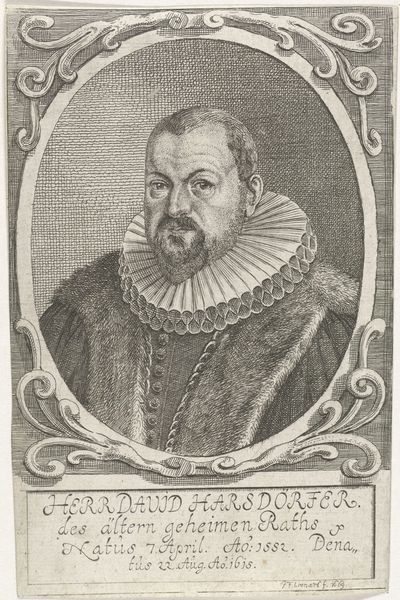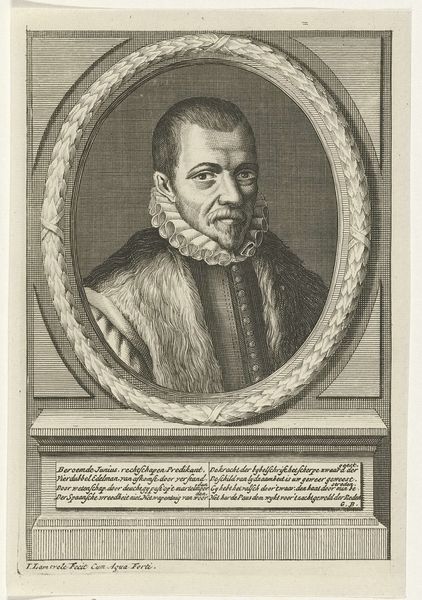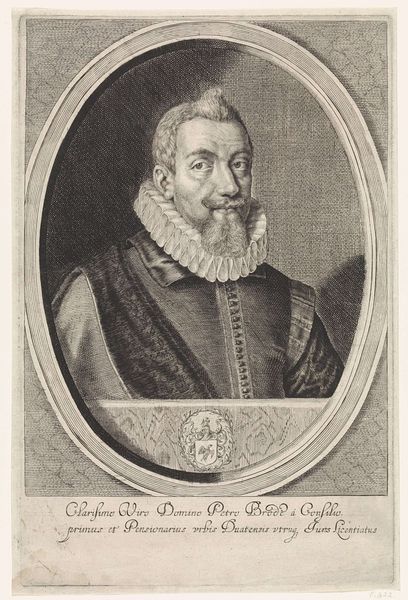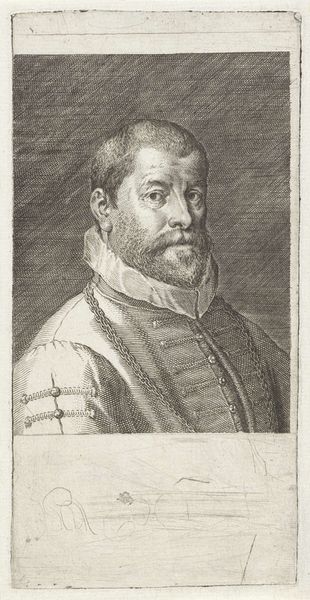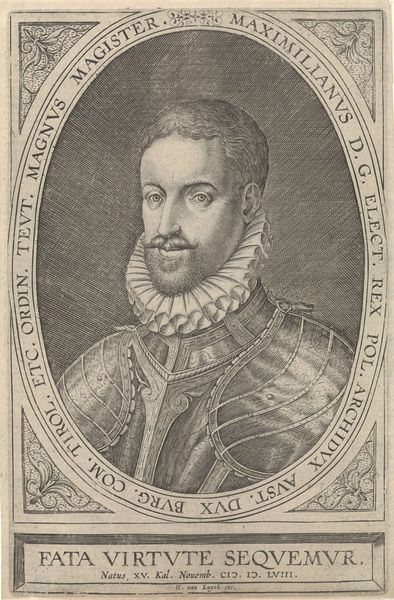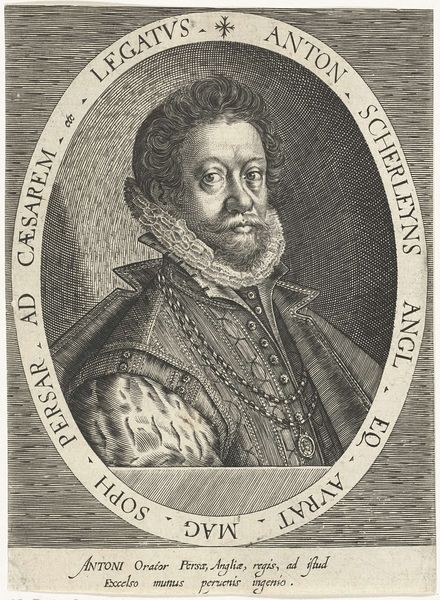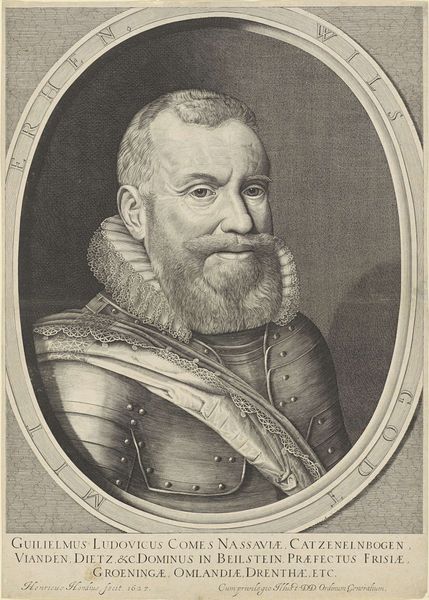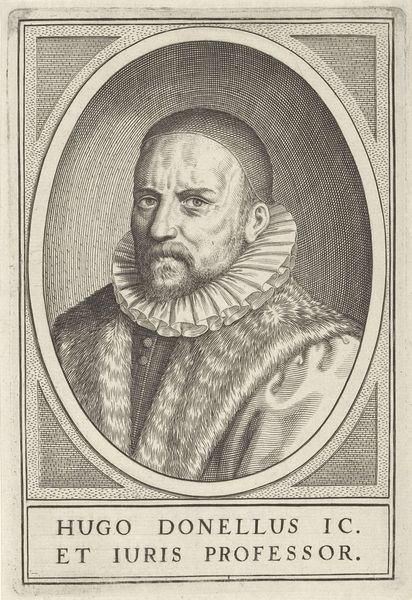
print, engraving
#
portrait
#
baroque
# print
#
engraving
Dimensions: height 172 mm, width 120 mm
Copyright: Rijks Museum: Open Domain
Pieter de Jode II created this portrait of Karel II, Archduke of Austria in 1660. The print situates Karel within a visual language of power and lineage. Portraits like this were critical in shaping the identity of rulers. Karel is presented not just as an individual, but as a symbol of Habsburg power. Consider the weight of expectation placed on individuals born into such roles, where personal identity is often secondary to dynastic duty. The use of Latin emphasizes the historical continuity and the universal claim to authority that the Habsburgs asserted. The Archduke's gaze and posture are carefully constructed to convey authority and stability. The intricate details of his clothing and the symbols of his office reinforce his status. As you look, consider the emotional landscape of someone whose life was so thoroughly defined by their position. How might this portrait also function as a form of propaganda, reinforcing societal hierarchies and norms?
Comments
No comments
Be the first to comment and join the conversation on the ultimate creative platform.

